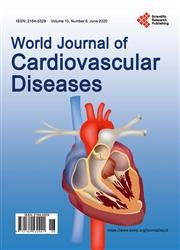Papillary Muscle Relocation in Secondary Mitral Regurgitation: Midterm Outcomes
引用次数: 0
Abstract
Background: Mitral valve repair in secondary mitral regurgitation is still uncertain as the chance of recurrence is approximately 30 percent after solely undersized annuloplasty. Some procedures adding to the subvalvular level are proposed to alleviate the recurrent rate. This study was to evaluate the clinical and echocardiographic outcomes of papillary muscle relocation plus undersized ring in secondary mitral regurgitation (2 nd MR). Methods: Medical records of moderate to severe 2 nd MR with tethering depth of more than 1 cm patients who underwent papillary muscle relocation plus undersized ring from 2014 to 2020 were reviewed. Clinical and echocardiographic parameters before and after operation were analyzed. Results: Thirty-two patients were included during the 6-year period. There was no perioperative mortality. Two patients died at one year from ischemic stroke and car accidents with overall 5-year survival of 93.7%. All patients were in NYHA class I and II with MR grading as trivial or mild at a median follow-up of 33 months. Postoperative mean tenting depth, area and posterior leaflet angle decreased remarkably from 1.18 cm, 2.61 cm 2 and 46.5 degree to 0.65 cm, 1.22 cm 2 and 28.6 degree, respectively (p < 0.001, 0.02, and 0.01). Moreover, left ventricular function and remodeling were also notably improved (EF; 38.2% vs 49.1%: p = 0.018, LVEDD; 62.8 vs 54.6 mm: p = 0.005, LVESD; 50.2 vs 42.4 mm: p = 0.01). Conclusions: Papillary muscle relocation combined with undersized annuloplasty improved mid-term clinical outcomes. Apart from reduction of recurrent MR rate, restoration of mitral configuration and reverse LV remodeling could be the effect of adding subvalvular correction in this pathology.继发性二尖瓣返流的乳头肌移位:中期结果
背景:二尖瓣修复在继发性二尖瓣返流中仍然不确定,因为仅在小尺寸环成形术后复发率约为30%。提出了一些增加瓣下水平的手术来减轻复发率。本研究旨在评价继发性二尖瓣反流(二次MR)中乳头状肌移位加小环的临床和超声心动图结果。方法:回顾2014 ~ 2020年中重度2次MR系扎深度大于1cm患者行乳头肌移位加过小环手术的病历。分析手术前后临床及超声心动图参数。结果:6年内纳入32例患者。无围手术期死亡。2例患者一年内死于缺血性脑卒中和车祸,5年总生存率为93.7%。所有患者均为NYHA I级和II级,MR分级为轻微或轻度,中位随访时间为33个月。术后平均帐篷深度、面积和后小叶角分别从1.18 cm、2.61 cm 2和46.5度显著降低至0.65 cm、1.22 cm 2和28.6度(p < 0.001、0.02和0.01)。此外,左心室功能和重构也明显改善(EF;38.2% vs 49.1%: p = 0.018, LVEDD;62.8 vs 54.6 mm: p = 0.005, LVESD;50.2 vs 42.4 mm: p = 0.01)。结论:乳头肌移位联合小尺寸环成形术改善了中期临床结果。除了降低复发率外,二尖瓣形态的恢复和左室的逆转重构可能是在这种病理中增加瓣下矫正的效果。
本文章由计算机程序翻译,如有差异,请以英文原文为准。
求助全文
约1分钟内获得全文
求助全文

 求助内容:
求助内容: 应助结果提醒方式:
应助结果提醒方式:


